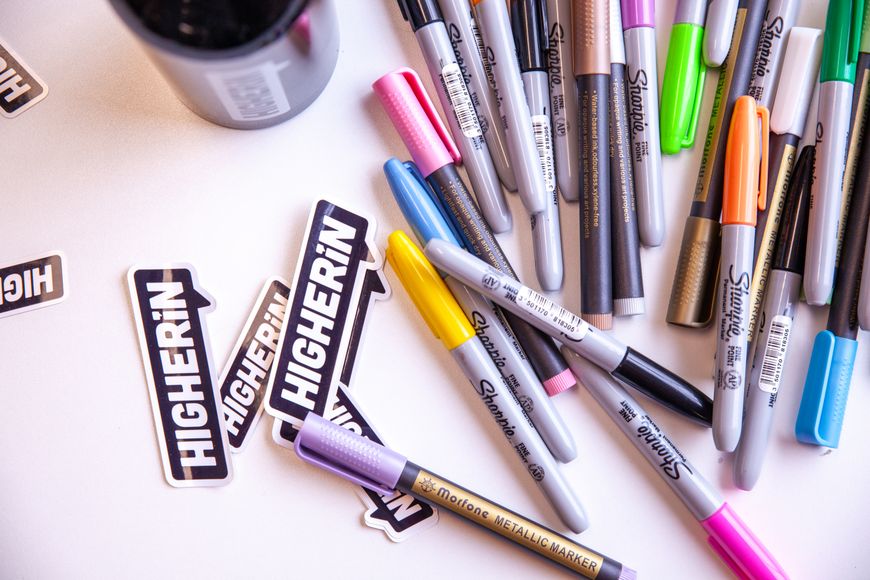
Photography Apprenticeships
Ever taken a photo and realised that everything from the juxtaposition to the lighting was just on point? Or do you already have a portfolio but are unsure of where to take your skills? A photography apprenticeship could be your next move.
Photography apprenticeships are the perfect chance for you to take your creativity and skills to the next level and apply them to a real-life photography job straight after you finish school or college. Read on to find out more.

Can you get an apprenticeship in photography?
100% YES. This is not a drill. You can absolutely accomplish your dreams of becoming the next Rankin through an apprenticeship.
Currently, two apprenticeships are available: a Level 3 (Advanced) Photographic Assistant apprenticeship and Level 4 (Higher) Photographer. Here, you would be carrying out skilled work in the photographic industry utilising common photographic knowledge and skills.
Photography apprenticeships are one of the best ways to jump-start your career, mainly because they combine real-life work experience with gaining an official qualification. You’ll be able to gain valuable skills right out of school, and the best part is you’ll earn a salary.
How does a photography apprenticeship work?
Photography apprenticeships can take place in a studio, on set or outdoors, where you’ll create imagery and video for multiple clients.
The photography apprenticeships lasts around 18 months. You’ll get a ton of practical experience and key skills to help you develop your business sense and become a photography pro.
Some of your tasks will include:
Assembling and dismantling photography equipment
Making sure images are to the customer's brief
Scouting locations and preparing set design
Using software to edit and process images
Art direction and taking photos.
Modules will cover:
Lighting your shoot
Photography direction
Photoshop and retouching
Legal training
Cybersecurity, storage and backup.
You'll put that knowledge into practice and get out in the field. You’ll spend much of your time working on campaigns ranging from commercial advertisements to magazine editorial images. Don’t get too comfortable in the studio.
Shoots can often be on location where you’ll be expected to work in various conditions. It’s a bit like being in a nature documentary, just more glamorous.
Depending on who you do your apprenticeship with, you’ll also join the Royal Photographic Society (RPS). Photographers for photographers run it, and there are some pretty decent perks with joining.
These include:
Premium Qualifications & Certifications
Inclusive Mentoring
Monthly Critiques
Over 500 hours of learning in video archives and articles
Membership in the Royal Photographic Society
Annual International Competition & Event.
Many training providers offer this membership as part of the apprenticeship.
What type of photography apprenticeships are there?
Photography apprenticeships come in various forms, each focusing on distinct aspects of the industry. Let’s explore the main types you might encounter:
Studio photography apprenticeships. You will work in a professional studio setting, assisting with lighting, camera setups, and editing. It’s common in portrait, fashion, or product photography. And you can learn about client communication, shoot planning, and post-production workflows.
Photojournalism apprenticeships. This combines photography with storytelling, often for news outlets or documentary projects. You get to capture real-life events, people, and places under time pressure. And learn about ethics, media law, and working in fast-paced environments.
Commercial and advertising photography apprenticeships. Your focus would be on creating high-quality images for brands, marketing campaigns, and products. Involves working closely with creative teams, stylists, and art directors.
Photography Assistant Apprenticeships. Entry-level roles that support established photographers. Tasks may include setting up equipment, managing files, and editing photos. Offers a behind-the-scenes view and hands-on learning in real-world shoots.
Which companies offer apprenticeships in photography?
JGA Group
Training provider JGA Group offers the Level 3 Photography Assistant apprenticeship.
Led by Anthony Milner, who has a really impressive CV, including work for Vogue, Savills and Aston Martin, you’ll learn everything a photographer needs to know, plus some essential skills such as developing a strong work ethic and how to be organised.
If you’d like to know more about training providers offering photography apprenticeships, you can check out gov.uk for more information.
The Royal Air Force
You read that correctly. The RAF does indeed offer photography apprenticeships as well as photography jobs. As a photographer, you’ll sit within the engineering team, where you’ll create still imagery for varying aspects of life in the RAF.
You’ll capture everything from brand photos and crime scenes to sports and VIP visits (including royalty). Some of your responsibilities include;
Shoot training video films
Gather photographic evidence for engineering, security and accident investigations
Print target identification images for aircrews.
You’ll work towards a Level 3 apprenticeship qualification awarded by the British Institute of Professional Photography and be paid around £16,800 in your first six months, which will move up to around £21,400.
You’ll also receive many very generous benefits, including subsidised rent, food and a free gym membership.
Here’s what a level 3 video and photography assistant apprentice said about their time with Mace:

I enjoy my program vastly and feel like there is lots for me to learn and improve over time. I also feel comfortable asking questions when stuck and when I need a hand with certain things Level 3 Apprentice, MACE
What GCSEs and A-levels do you need for a photography apprenticeship?
Every level of apprenticeship has a different entry requirement. We’ve listed these below;
Level 2 - Some ask for two or more GCSEs graded at 9 to 4 (A* to C). However, lots of Level 2 apprenticeships don’t require GCSEs.
Level 3 - Five GCSEs graded 9 to 4 (A* to C) or a Level 2 apprenticeship
Level 4/5 (Higher) - Two A-levels or equivalent (like a BTEC or an NVQ/SVQ).
Level 6/7 (Degree) - Three A-levels graded at A* to C or equivalent.
Creative subjects like art, design, or photography may also help you stand out in your application process, but are unlikely to be necessary to apply.
It’s always a good idea to check with the employer directly if you're unclear about their entry requirements. Normally, however, they have what they're looking for in an apprentice in the job description.
How much do you get paid for a photography apprenticeship?
Typically, this will depend on what level you are completing your apprenticeship at, and what type of photography you are doing. You will get at least the national minimum wage for an apprenticeship. However, a lot of companies pay a lot more than this, with the average being £20,000 a year!
With a photography apprenticeship, you also have the opportunity to earn big. While the job market for photographers is competitive, there is still demand for their services!
How to apply for a photography apprenticeship
Applying for a photography apprenticeship starts with finding the right opportunity. You can search creative job boards or directly on the websites of photography studios, media companies, or marketing agencies. Some training providers and colleges also list apprenticeship openings in partnership with local employers, so it’s a good idea to check them out as well!
Once you’ve found a role, you’ll usually need to submit a CV and cover letter. It’s a good idea to include a portfolio of your work, even if it’s just personal or school projects, as this shows your creative eye, technical skills, and passion for photography.
If shortlisted, you may be invited to an interview or informal chat, where you can talk about your interest in photography, your experience, and what you hope to learn. A willingness to learn, enthusiasm, and a positive attitude can go a long way, even if you're just starting.
READ APPLICATION TIPS














